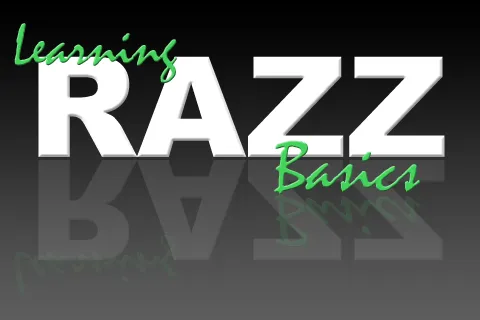Learn to Razzle Dazzle


If you're following Razz updates, you'd better know how to play so you can make sense of it all. If you're unfamiliar with the game, we've put together a synopsis on how it's played. Check it out below.
Razz, played between two and eight players, is essentially Seven Card Stud low. The objective of Razz is make your lowest five-card hand using any combination of the seven cards you are dealt. Unlike Texas Hold’em and Omaha, Razz is a forced-bet game that features antes instead of blinds. Every player must ante up before the hand begins. The ante does not count towards any future bets.
Every player is dealt a total of seven cards over the course of a hand beginning with two hole cards and one up card. A round of betting occurs and then three more cards are placed face up, each followed by a round of betting. The seventh and final card is then dealt facedown to each player, giving him or her three down cards. A final round of betting ensues.
1.) The Goal—Make the lowest five-card hand using any combination of the seven cards you are dealt.
2.) The Ranking of Hands—Razz uses the same ranking system as Ace-to-Five Triple Draw, meaning straight and flushes do not count and aces are always low. That means the best possible hand in Razz is a wheel (A-2-3-4-5). A hand like 6-5-4-3-2 is known as a “Six-Low” because its highest card is a six, while a hand like 8-6-5-4-3 is known as an “Eight-Low”. Hands often take it one card further and would call it an “Eighty Six”.
Here are ten sample Razz hands ranked from best to worst:




 (best possible hand)
(best possible hand)



 (second-best possible hand)
(second-best possible hand)







































3.) The Bring In — Play always moves clockwise and starts with the players seated after the dealer button (typically represented by a plastic disk which moves every hand). After each player has anted and been dealt their hole cards and one up card, the person with the highest card must post the "bring in" (the opposite of Seven Card Stud), a required bet of either approximately half of the low-limit bet size in the pot or a full bet (the amount is determined by the player but it’s very rare to see it brought in for a full bet).
If two or more players share the lowest card, the suits will come into play. While there is no industry standard, the most common ranking of suits is reverse alphabetical order: clubs (lowest), diamonds, hearts, and spades (highest). The bring-in counts as your first round bet, so as long as nobody raises, you won't have to place any more money in the pot to see the next card.
In the rare case that the player with the high card is all in and cannot afford the bring in, the next player to the left (regardless of their card) becomes the new bring in.
4.) Betting rounds: There are five rounds of betting in Razz, one after you receive your two down cards and one up card, and then four subsequent rounds—the turn, fifth street, sixth street and seventh street (the last card is dealt face down). After fourth street, the player with the low hand showing acts first and then action proceeds clockwise around the table.
In fixed-limit Razz, which is the most common variant, all bets and raises must be equal to either the low limit or high limit bet size, depending on the round. In the first two rounds, all bets and raises must be equal to the low-limit bet size. In the third, fourth, and fifth rounds, all bets must be equal to the high-limit bet size.
In the rare case that all players in an eight-handed game make it to the end and cards run out before Seventh Street, a single community card will be dealt for all players to share.
8.) The Showdown— Anyone who has not folded after the last round of betting will showdown their hand in hopes of taking down the pot. When playing Razz, the person who bet last is the first to show their hand, and then it proceeds clockwise from there. Each remaining player has the choice to either show his or her hand or muck it. Often times a player will muck their hand if they aren't going to win the pot, and don't want their opponents to see what they played.
For more poker rules, be sure to visit PokerNews' Poker Rule Section.

